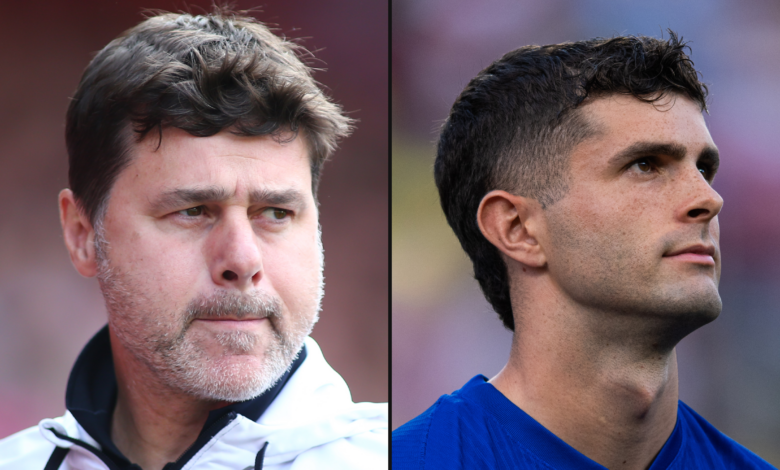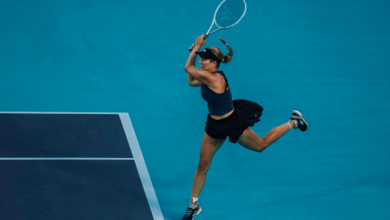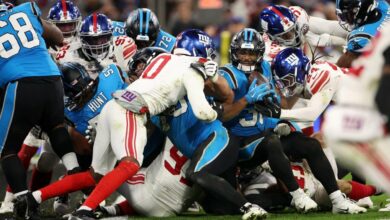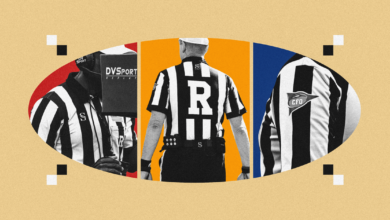Pochettino’s tactics: How to boost the US national team for the 2026 World Cup

After a disappointing Copa America as host country this summer and with the men’s World Cup being played largely on home soil in two years, the U.S. national team had to go all out to replace Gregg Berhalter as head coach.
Think about their statement.
There’s a strong case to be made that Mauricio Pochettino will become the most decorated coach in U.S. men’s national soccer team history if he puts pen to paper. In 649 appearances in European club soccer’s biggest competitions since 2009 — including 45 in the UEFA Champions League, including one in the final — the 52-year-old Argentine has a wealth of experience under his belt, and his bio is rich enough to emerge as the face of the U.S.’s defining campaign at the 2026 World Cup.
But reputation aside, what can USMNT fans expect from a Pochettino team? And is his appointment a good tactical fit for the current generation of American players?
Since Gregg Berhalter first took charge nearly six years ago, the shadow of the men’s World Cup, co-hosted by the United States, Canada and Mexico in 2026, has hung over it. One of the goals of his tenure has been to integrate young talent into the senior national team, with prospects such as Christian Pulisic (above right), Tyler Adams and Sergino Dest establishing themselves in the squad under his leadership.
There was a sense that the group was approaching its collective peak ahead of this summer’s Copa America, also played on American soil, but while debate rages over the relative quality of the ‘golden generation’ of American players at Berhalter’s disposal, there is little doubt that they underperformed. Defeat by Panama in their second of three group stage games may have hinged on an early red card for Tim Weah, but there was a worrying lack of creativity and forward drive from midfield, in a team that still seemed over-reliant on Pulisic for moments of attacking inspiration.
The good news is that Pochettino is known for his work with younger players, and he should seize the opportunity to develop the squad he inherits with enthusiasm and exciting, versatile options in different areas of the pitch. Players such as Folarin Balogun, 23, Gio Reyna and Yunus Musah, both 21, will appeal to Pochettino – players with star power, but also with something to prove.

Pochettino’s preference for working with young players is a deep-rooted belief that stems from his own formative years when Marcelo Bielsa – later his manager at Spanish side Espanyol and the Argentina national team – gave him an early chance at Newell’s Old Boys club in their homeland, along with several other promising players who would go on to make a big impact in the first team.
He also believes it’s difficult to change the mindset or habits of more seasoned veterans who sometimes can’t adapt to his methods. Pochettino seems wary of letting a few big names dominate a dressing room — remember, this is a man who played alongside both Argentine icon Diego Maradona and Brazilian superstar Ronaldinho during his tenure.
Pulisic has status and reputation, but not dominance in a negative sense. Pochettino didn’t enjoy running a star-studded Paris Saint-Germain team from January 2021 to the summer of 2022, with the trio of big names in Lionel Messi, Neymar and Kylian Mbappe undermining his focus on team cohesion off the ball.
In that respect, the profile of this American national team, in terms of age and character, seems to suit him. He still has plenty of time to build relationships with the players in the run-up to the World Cup, which will take place in just under two years.

Pochettino led Tottenham to their first ever Champions League final in 2019 (Chris Brunskill/Fantasista/Getty Images)
Tactically, Pochettino is known for his high-press ideology, something he favours with a young squad, stressing that it is not about physical ability but how much players are prepared to run.
To further explore his style, we can look at The Athletics‘s Playing Style Wheel, using his solitary season as Chelsea manager to outline how his team would perform against Europe’s top seven domestic leagues. Those defensive stats stand out, with their 89 out of 99 Intensity rating speaking to the front-footed nature of their press.

A 96 Central Progression rating indicates a desire to build attacks cautiously and patiently through the middle — something that suits the technical players at the heart of the USMNT midfield. While many have failed to find their rhythm in the three games at the Copa America, Pochettino will have plenty to work with in that area of the pitch.
Adams, 25, brings unrivalled defensive tenacity to the core of the three-man midfield formation, and is a talented ball progressor who can pick out crisp passes to the more advanced No 8s, while 22-year-old Johnny Cardoso is a strong tackler who is an equally natural pacemaker from deep. The technical ability and versatility of Weston McKennie, 25, proved invaluable to Berhalter in the latter years of his tenure, while Reyna provided genuine forward drive and fearlessness from a more advanced position as the USA won the CONCACAF Nations League in March this year.
Add to that Musah’s possession, the devilish late runs of Luca de la Torre, 26, and even the creativity and weight of Malik Tillman’s passing, 22, and there are plenty of options for Pochettino to change.

Pochettino will have plenty of talent at his disposal in America (Robin Alam/ISI Photos/Getty Images)
Less encouraging from the playing style wheel above will be a rating of 32 for Chance Prevention. Chelsea’s tally of 77 league goals scored last season was their third highest in the past 15 years, but it came at a significant price, as they conceded more league goals (63) than in any season since the Premier League was formed in the early 1990s.
As unremarkable as it may sound, international football is primarily about strong defence and Pochettino failed to show that in his last spell in the dugout.
Such shortcomings would naturally place more emphasis on the individual quality of the defence and the goalkeeper; areas where the current Stateside squad struggles. Goalkeeper Matt Turner played little last season for his Premier League club Nottingham Forest and his passing and distribution were sometimes questionable in the Copa America. Of the other options in that position, Ethan Horvath, from Cardiff City in England’s second championship, has taken another step down in quality and conceded a poor goal when he came on after Turner was injured in that match against Panama.

Matt Turner had a disappointing time at this summer’s Copa America (Robin Alam/ISI Photos/Getty Images)
In addition, there are few obvious candidates to replace centre-back Tim Ream, who turns 37 in October, and there are doubts about the strength of the players behind him and the other current starter in that position, Chris Richards.
Pochettino will need to better manage his possession game if he is to mask that weakness at the top level.
Ultimately, international football is a tricky arena to navigate. With long periods of time between sets of games, and a disproportionate share of straight-knockout, do-or-die contests, ambitious projects can be reduced to individual results, years of work washed away in a few minutes of action.
It makes managerial dismissals like Berhalter’s — and indeed, appointments like Pochettino’s — difficult to judge; the “perfect” candidate is almost impossible to find. But for a team as young as the US is at the moment, with the eyes of the world firmly on them in two years’ time, a household name like him certainly brings the requisite experience and know-how, even if this is his first foray into international play as a coach.
Golden generations don’t last forever.
Pochettino will at the very least bring a welcome dose of conviction and expertise.
Additional reporting: Michael Cox and Mark Carey
(Top photos: Getty Images)




